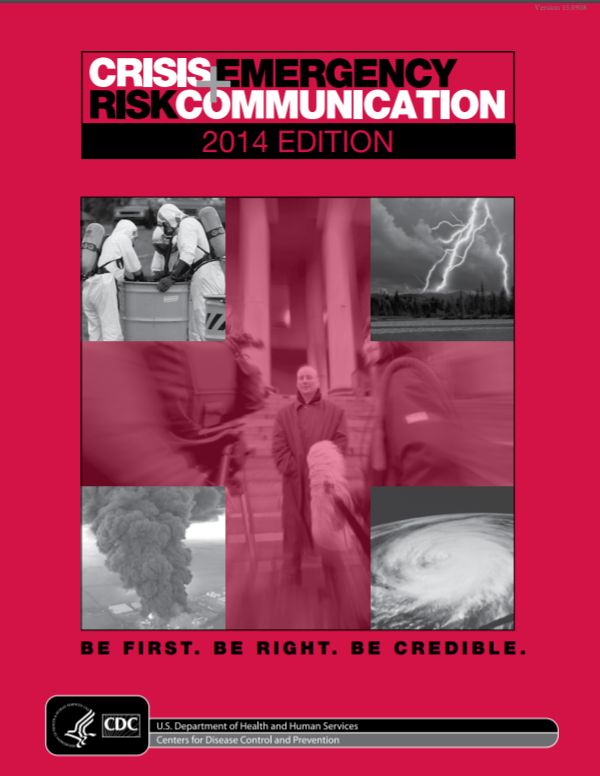


Be first. Be right. Be credible.
After the 2001 anthrax attacks – when white powder in envelopes sparked widespread panic – the Centers for Disease Control and Prevention created a 450-page manual outlining how U.S. leaders should talk to the public during crises.
The CDC guidebook, with “Be first. Be right. Be credible.” on the front cover was developed by the country’s top doctors, public health researchers, scientists, consultants and behavioral psychologists.
This guidebook has been used for the last 18 years by responsible elected officials and public health directors to offer guidance and instill confidence in a wide variety of situations.
At Hennes Communications, we’ve based much of the training we do on the concepts taught in this guidebook.
Today, however, it seems that a number of elected officials across the U.S. have decided to ignore this guidebook. You can read details of the dichotomy between those elected officials and the public health community here.
=======================
From the opening page of the 450-page CDC manual referenced above:
This manual introduces the reader to the principles and practical tools of crisis
and emergency risk communication (CERC). Principles in this manual adapt
(1) writings of classical rhetoricians; (2) a wealth of modern crisis, issues
management, communication theory, and psychological theory; and (3) lessons
learned from the real and often painful world of experience, old-fashioned trial
and error.
CERC addresses a number of topics critical to successful public, partner,
and stakeholder communication during crises and emergencies. This is not
intended to be an in-depth manual on risk communication, issues management,
crisis communication, or disaster communication. It is an amalgamation of all
of these, incorporated from theory and practical applications. CERC draws on
the work of many experts including Drs. Peter Sandman and Vincent Covello;
therefore, no single chapter is a complete source for a specific discipline. The
chapters are meant to help those who are charged with these responsibilities,
but who may not be steeped in these subjects, to manage the task of planning
and implementing CERC activities. When possible, we have provided resource
sites that offer more in-depth materials on a particular subject.
CERC is the attempt by public health professionals to provide information
that allows individuals, stakeholders, and entire communities to make the best
possible decisions for their well-being during a crisis or emergency. CERC
includes communicating to these groups regarding decisions made by response
organizations within nearly impossible time constraints. CERC principles teach
us to accept the imperfect nature of choices as the situation evolves.
You can read the entire manual for yourself here.